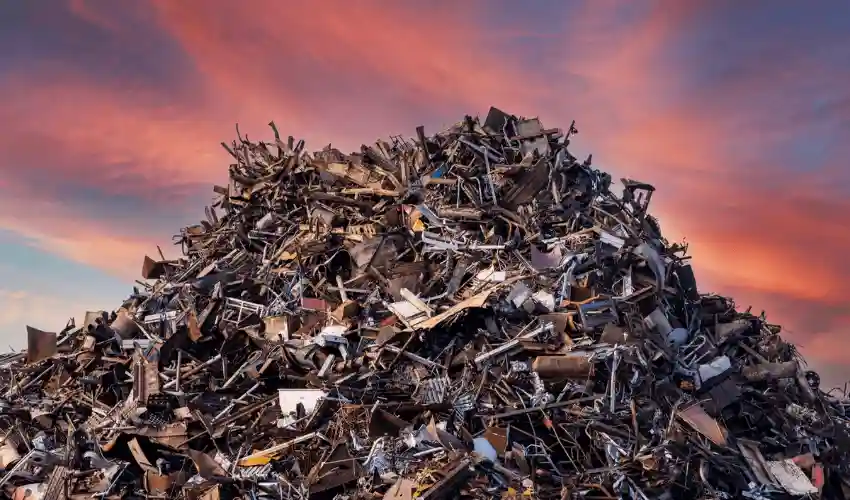Scrap steel is an essential material in the recycling industry, playing a crucial role in sustainable manufacturing and resource conservation. Understanding the different types of scrap steel can help businesses, recyclers, and individuals make informed decisions about recycling and repurposing metal waste. Here are seven common types of scrap steel you should know.
- Heavy Melting Steel (HMS)
Heavy Melting Steel (HMS) is a broad category of scrap steel, typically classified into HMS 1 and HMS 2.
- HMS 1 consists of heavier and thicker steel pieces, free from contaminants like galvanized or coated materials.
- HMS 2 is similar but may include thinner steel pieces and slight impurities such as galvanized or painted surfaces.
HMS is widely used in steelmaking and construction industries due to its durability and high iron content.
- Shredded Steel Scrap
Shredded steel scrap consists of small, processed steel fragments obtained from old vehicles, appliances, and industrial scrap. This type of scrap is preferred by steel mills because it is clean, easy to transport, and melts quickly, making it highly valuable in steel production.
- Busheling Scrap
Busheling scrap is high-quality, clean, and new sheet steel scrap generated from manufacturing processes like stamping and cutting. This type of steel is free from coatings, rust, and impurities, making it ideal for re-melting in steel mills to create new products such as automotive components and machinery parts.
- Cast Iron Scrap
Cast iron scrap comes from discarded pipes, engine blocks, machine parts, and construction materials. It is heavier and more brittle than other types of bulk scrap metal for sale. Due to its high carbon content, cast iron scrap is commonly used in foundries and metalworking industries for producing new cast iron products.
- Stainless Steel Scrap
Stainless steel scrap contains high amounts of chromium and nickel, making it corrosion-resistant and highly valuable. This scrap is sourced from kitchen appliances, medical equipment, industrial machinery, and construction materials. Stainless steel scrap is recycled to create new stainless steel products with minimal degradation in quality.
- Tool Steel Scrap
Tool steel scrap comes from high-strength steel used in cutting tools, dies, and molds. This type of scrap contains special alloying elements such as tungsten, molybdenum, and vanadium, which provide excellent durability and heat resistance. Recycled tool steel is used to manufacture high-performance industrial tools and machinery.
- Tin-Coated Steel Scrap
Tin-coated steel scrap, often known as tinplate scrap, comes from food cans, electronic components, and packaging materials. Although the thin tin coating makes recycling more complex, specialized processes can efficiently separate tin from the steel, allowing both materials to be reused.
Why Recycling Scrap Steel Matters
Recycling scrap steel offers multiple benefits, including:
- Environmental Protection: Reduces the need for mining raw iron ore and lowers greenhouse gas emissions.
- Economic Value: Saves energy and reduces production costs for manufacturers.
- Sustainable Resource Management: Ensures a continuous supply of steel without excessive environmental damage.
Final Thoughts
Understanding the different types of scrap steel helps in better recycling practices and promotes efficient use of resources. Whether you’re a recycler, manufacturer, or just someone looking to dispose of metal waste responsibly, knowing these common scrap steel types will help you make informed decisions. Recycling scrap steel is a step towards a more sustainable and eco-friendly future.
